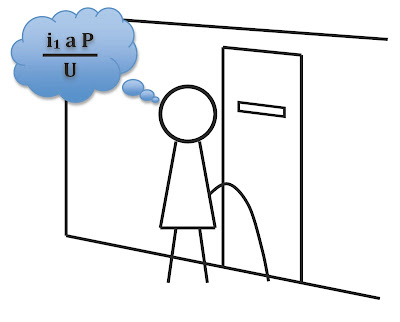So, as we approach the end of Egypt Week, we are going to talk about recent paper in PNAS. The researchers examined the effects of oxytocin on the extent to which people exhibit in-group favoritism. They use ethnic markers to indicate in-group versus out-group membership. In this study, which was performed in the Netherlands, the in-group was Dutch and out-groups were German or Arab.
Here’s the bottom line: subjects who were given oxytocin were more likely to favor in-group members relative to placebo-treated subjects. There was also a hint that oxytocin enhanced negative attitudes towards out-group members, but this second effect was quite weak.
 |
| Oxytocin causes people to exhibit greater affection and favoritism towards people with whom they share identifying characteristics. |
They examined the effects in the context of three different types of experiment. The first was a set of Implicit Association Tests, which asks subjects to identify in-group members by pressing one key and out-group members by pressing a different key. At the same time, individuals use the same two keys to categorize positive and negative words. The test measures how quickly people are able to perform the task when the positive words and in-group members use the same key, and compares this to their performance when positive words use the same key as out-group members.
People are deemed to exhibit in-group bias if they perform the categorization task more quickly when the “in-group key” is the same as the “positive words key” relative to when positive words use the same key as out-group members. The average extra time it takes in the slower arrangement is a quantitative measure of the degree of in-group bias. It was this measure that was enhanced by treatment with oxytocin.
If you’re interested in this sort of test, researchers at Harvard have an online setup, where you can test your own implicit biases about race, sexuality, and other things, and you can see how you compare to the distribution of other people who have taken the test. Check it out here.
The second test looked at “infrahumanization.” It measured how likely subjects were to associate someone with emotions that are commonly perceived to be “uniquely human,” here embarrassment, contempt, humiliation, admiration, hope, and surprise. (This is not a claim that these emotions are actually limited to humans, just that they are often perceived to be so.) Again, people are more likely to associate these with people of their own ethnicity, and treatment with oxytocin appears to enhance this bias.
The third test was a moral dilemma task of the sort that I have described previously. Subjects had to decide whether to take an action that would kill one person in order to save a group of other people. The ethnicity of the one person whom the subject would have to sacrifice was signaled through middle names that were stereotypically Dutch (e.g. Dirk), German (e.g. Helmut), or Arab (e.g. Ahmed). In this test, treatment with oxytocin made the Dutch subjects less likely to sacrifice someone with a Dutch name, but did not affect their willingness to sacrifice Germans or Arabs.
 |
| In a March 2010 Playboy interview, “musician” John Mayer bemoaned the fact that he has “a Benetton heart and a fuckin’ David Duke cock.” This may be a consequence of a currently undescribed genetic disorder that produces a highly non-uniform distribution of oxytocin in the body. If true, this disorder will someday be known as “John Mayer Syndrome.” Alternatively, it is possible that he is just a douche. Image via Jezebel. |
A lot of studies have investigated the effects of oxytocin on behavior, and it is has previously been shown to enhance trust, cooperativeness, empathy, and prosociality. The authors of this paper interpret their results as saying that oxytocin should not be viewed as a general-purpose feel-good chemical that makes everyone all happy and want to share things. Rather, they argue that these effects may be limited to those with whom the individual shared a common identity. In more complex social settings, they suggest, the in-group bias that is enhanced by oxytocin can lead to actions that are perceived as unfair by out-group members, and can actually enhance between-group conflicts.
Peace be upon you.
De Dreu CK, Greer LL, Van Kleef GA, Shalvi S, & Handgraaf MJ (2011). Oxytocin promotes human ethnocentrism. Proceedings of the National Academy of Sciences of the United States of America, 108 (4), 1262-6 PMID: 21220339




